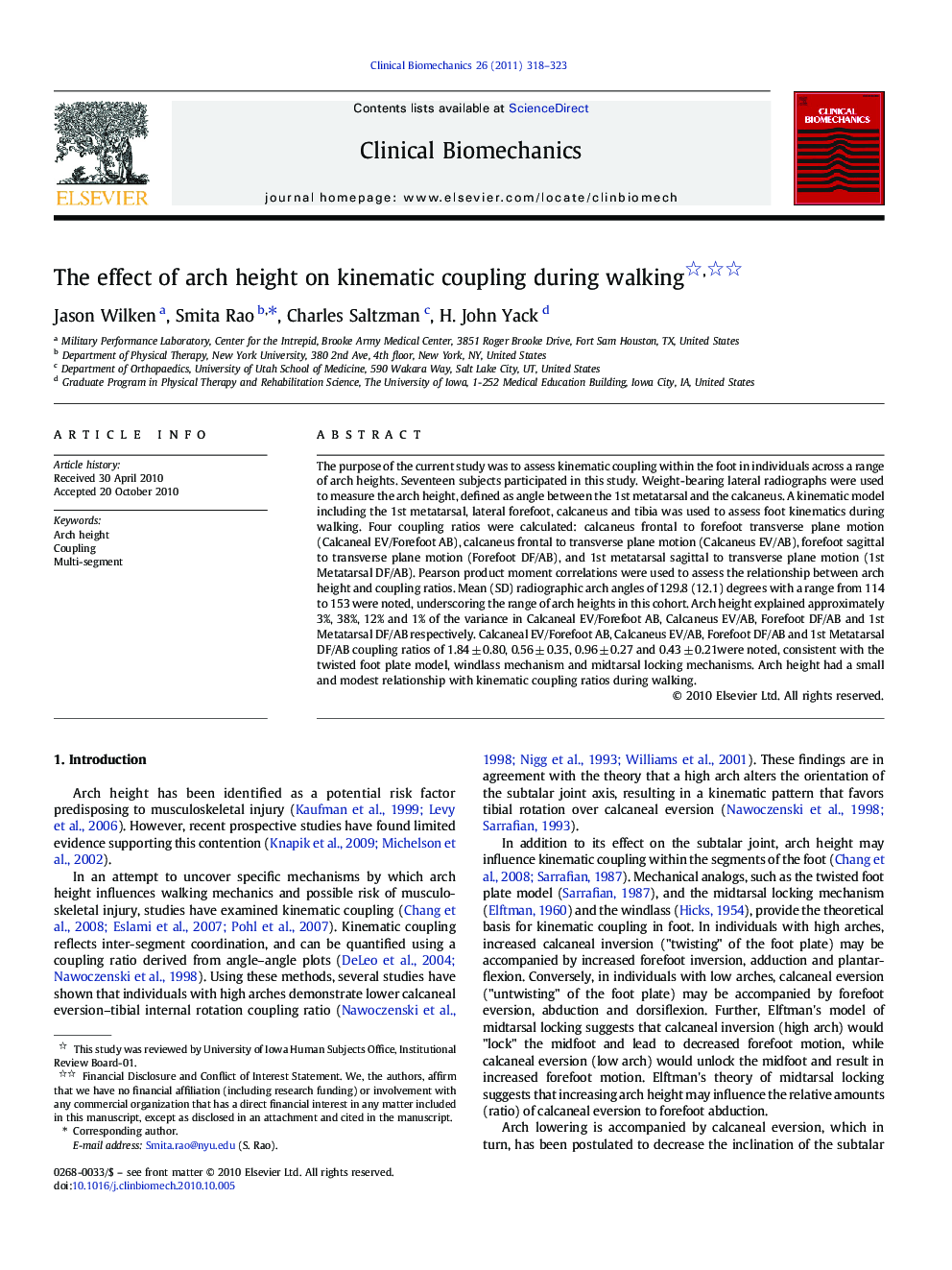| Article ID | Journal | Published Year | Pages | File Type |
|---|---|---|---|---|
| 4050930 | Clinical Biomechanics | 2011 | 6 Pages |
The purpose of the current study was to assess kinematic coupling within the foot in individuals across a range of arch heights. Seventeen subjects participated in this study. Weight-bearing lateral radiographs were used to measure the arch height, defined as angle between the 1st metatarsal and the calcaneus. A kinematic model including the 1st metatarsal, lateral forefoot, calcaneus and tibia was used to assess foot kinematics during walking. Four coupling ratios were calculated: calcaneus frontal to forefoot transverse plane motion (Calcaneal EV/Forefoot AB), calcaneus frontal to transverse plane motion (Calcaneus EV/AB), forefoot sagittal to transverse plane motion (Forefoot DF/AB), and 1st metatarsal sagittal to transverse plane motion (1st Metatarsal DF/AB). Pearson product moment correlations were used to assess the relationship between arch height and coupling ratios. Mean (SD) radiographic arch angles of 129.8 (12.1) degrees with a range from 114 to 153 were noted, underscoring the range of arch heights in this cohort. Arch height explained approximately 3%, 38%, 12% and 1% of the variance in Calcaneal EV/Forefoot AB, Calcaneus EV/AB, Forefoot DF/AB and 1st Metatarsal DF/AB respectively. Calcaneal EV/Forefoot AB, Calcaneus EV/AB, Forefoot DF/AB and 1st Metatarsal DF/AB coupling ratios of 1.84 ± 0.80, 0.56 ± 0.35, 0.96 ± 0.27 and 0.43 ± 0.21were noted, consistent with the twisted foot plate model, windlass mechanism and midtarsal locking mechanisms. Arch height had a small and modest relationship with kinematic coupling ratios during walking.
